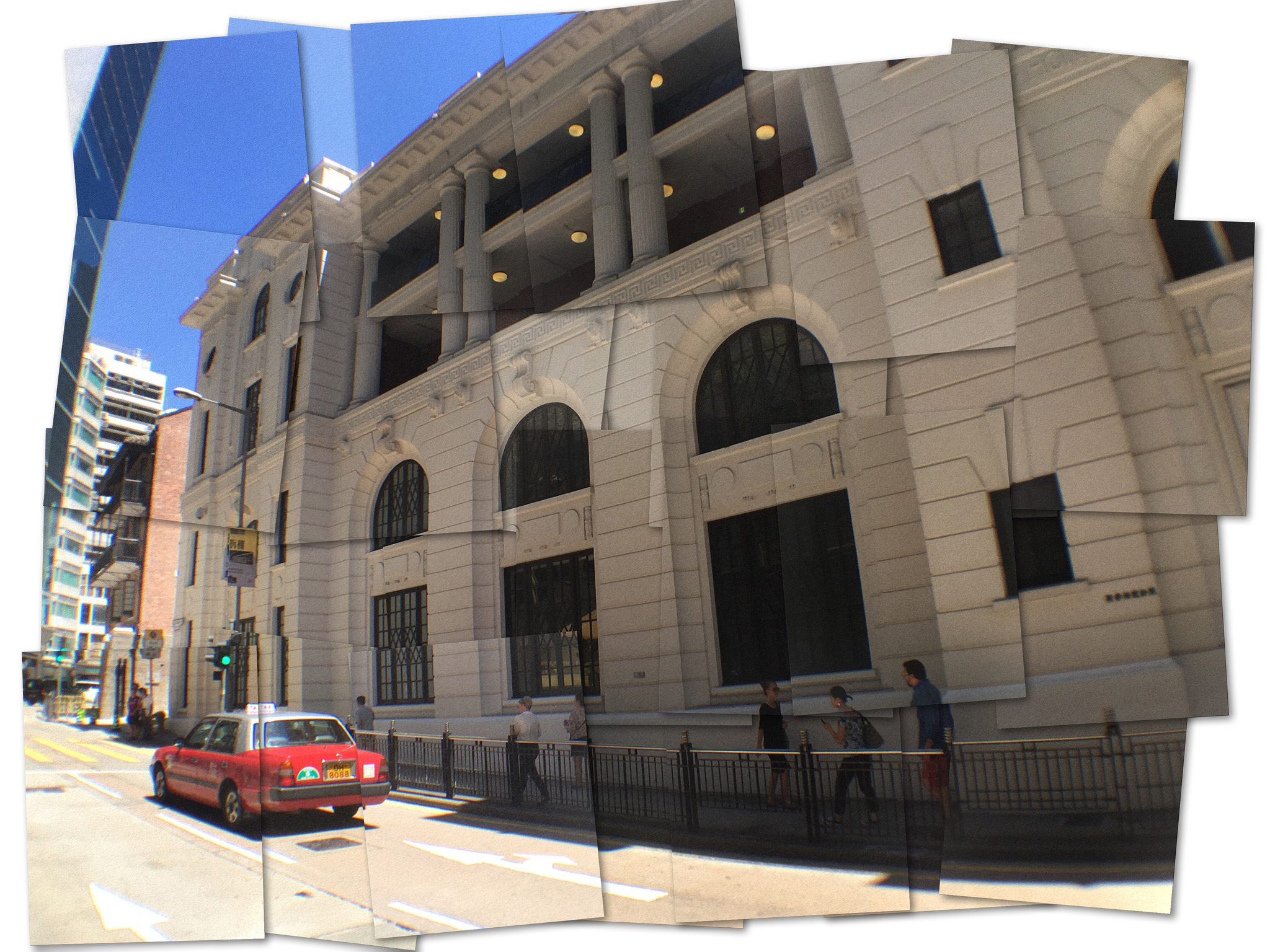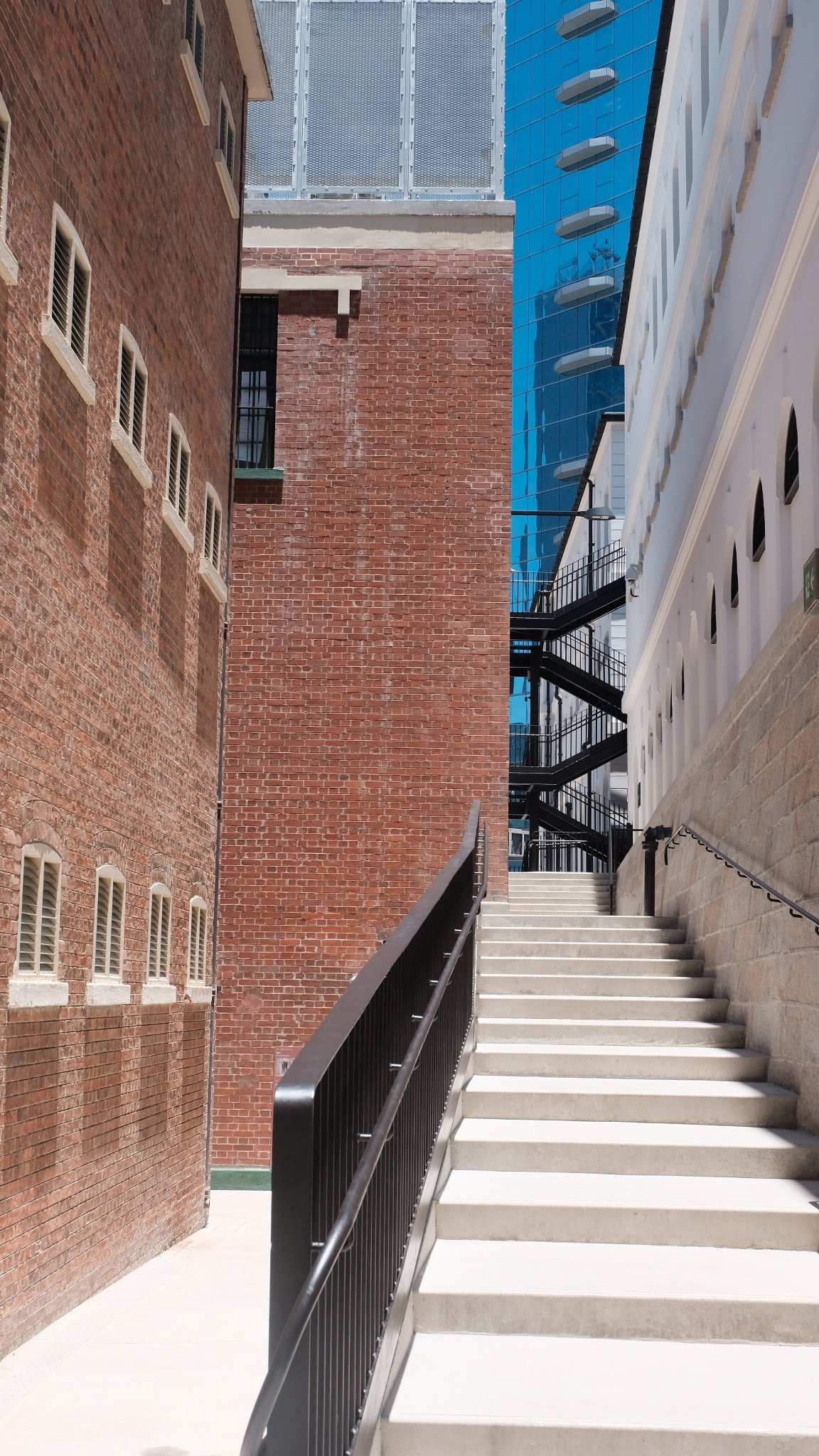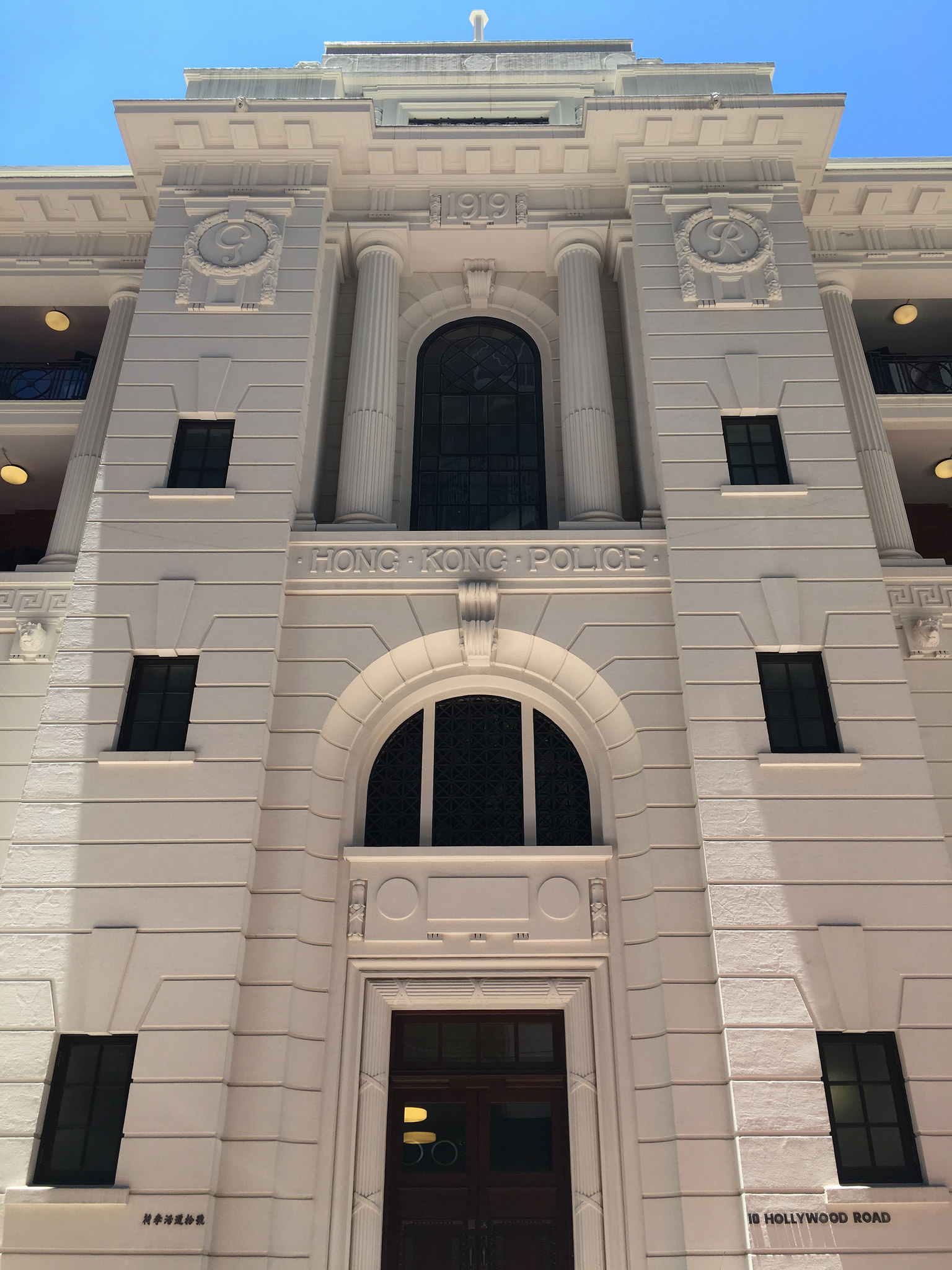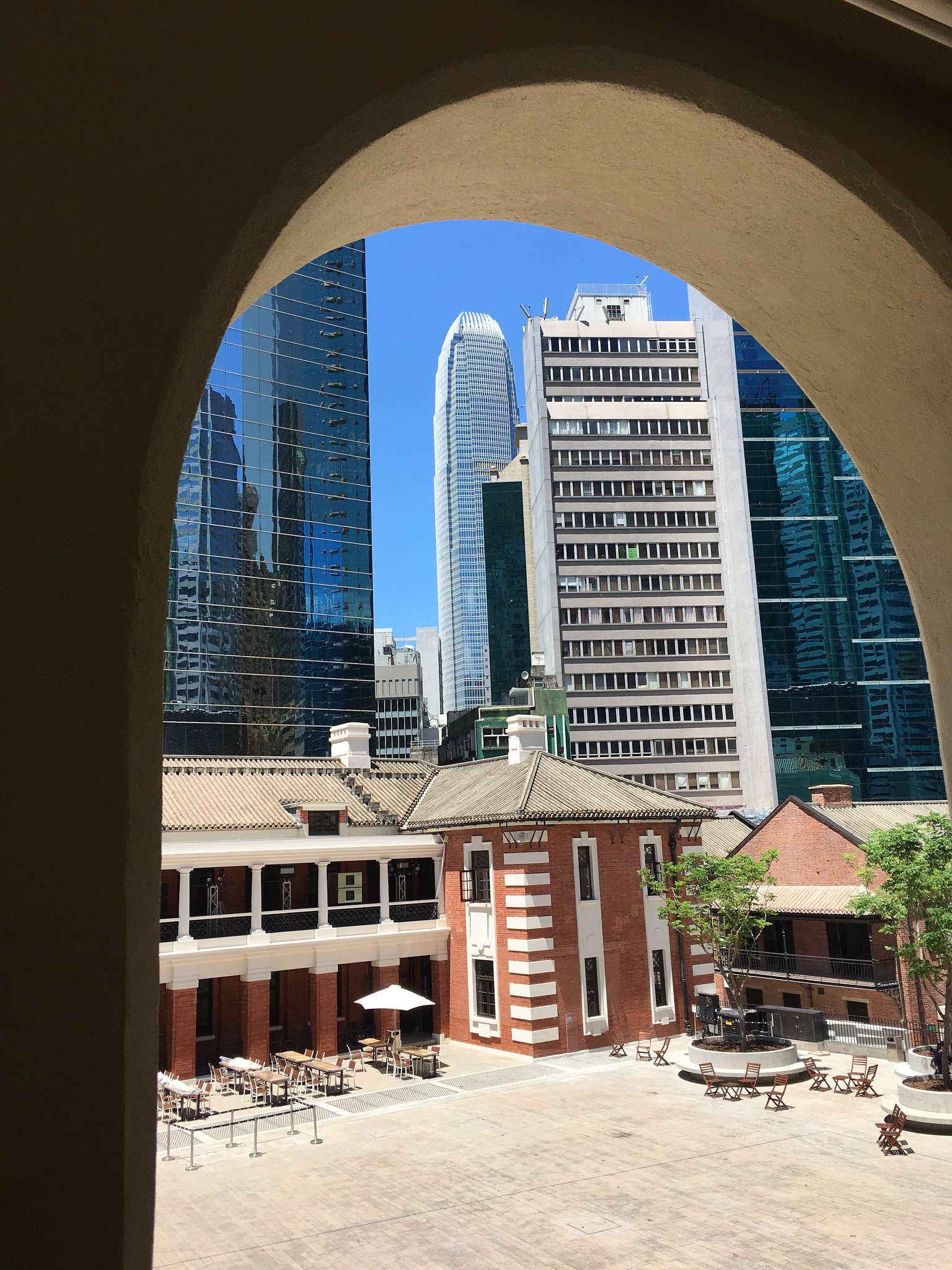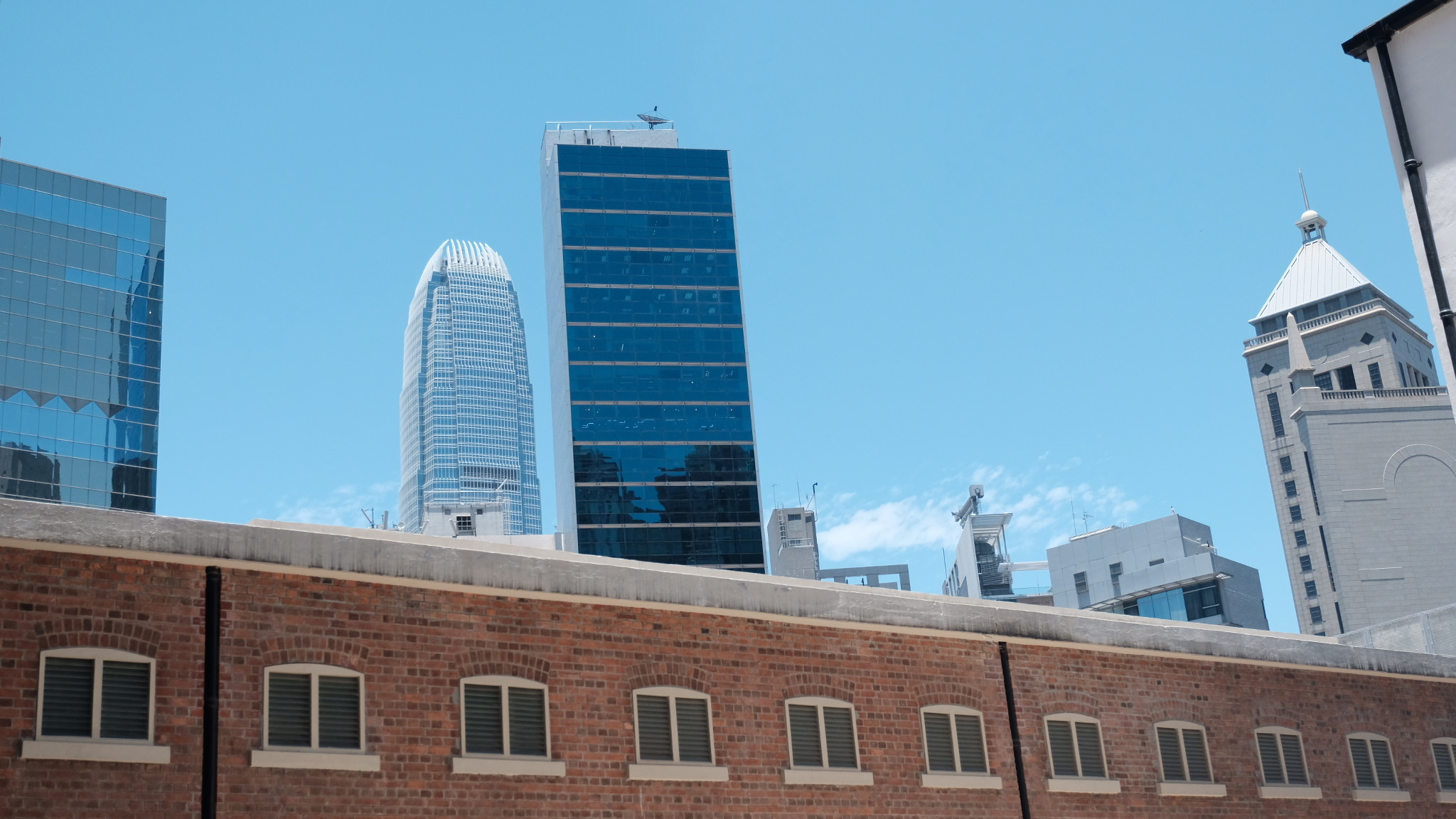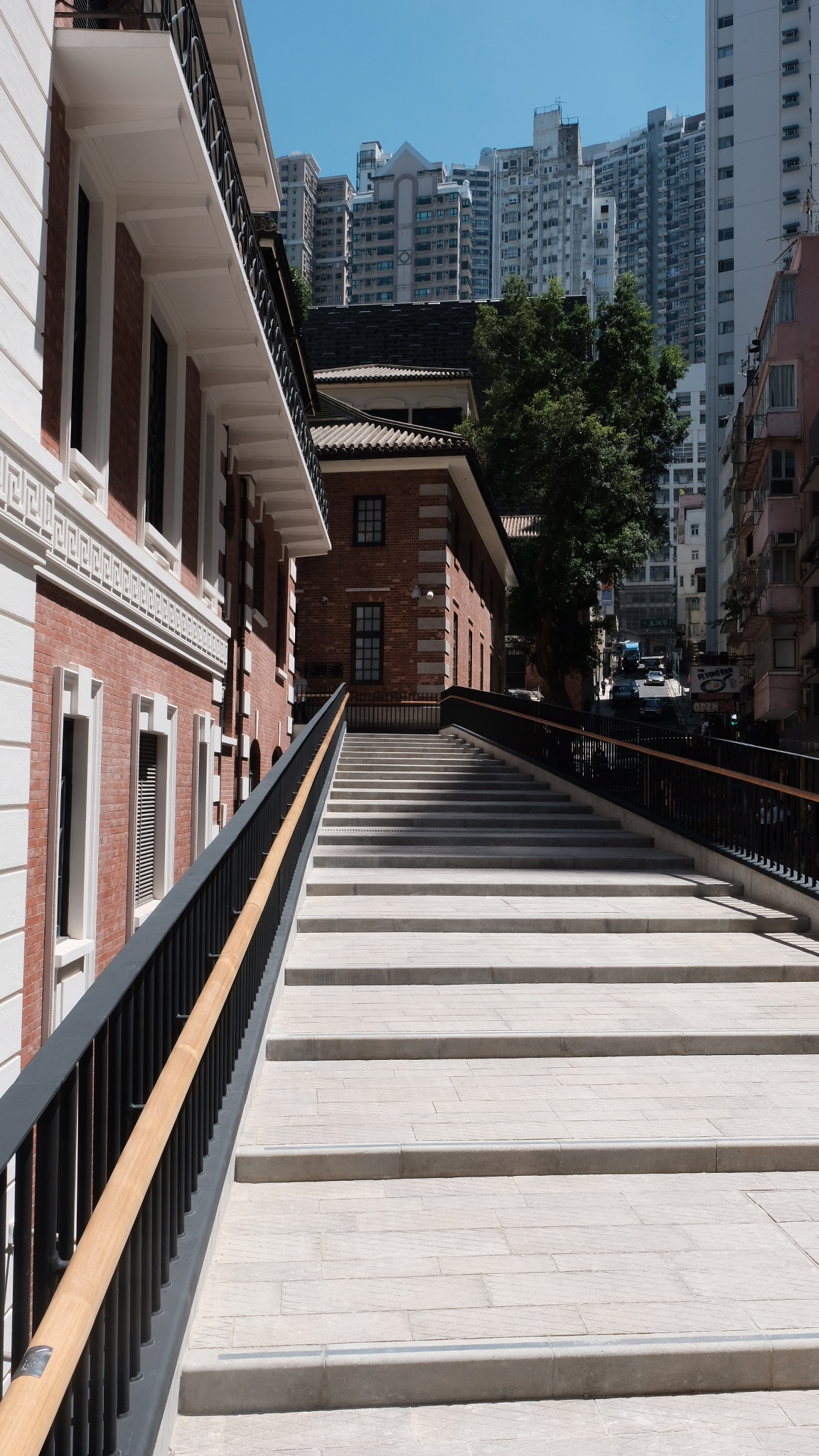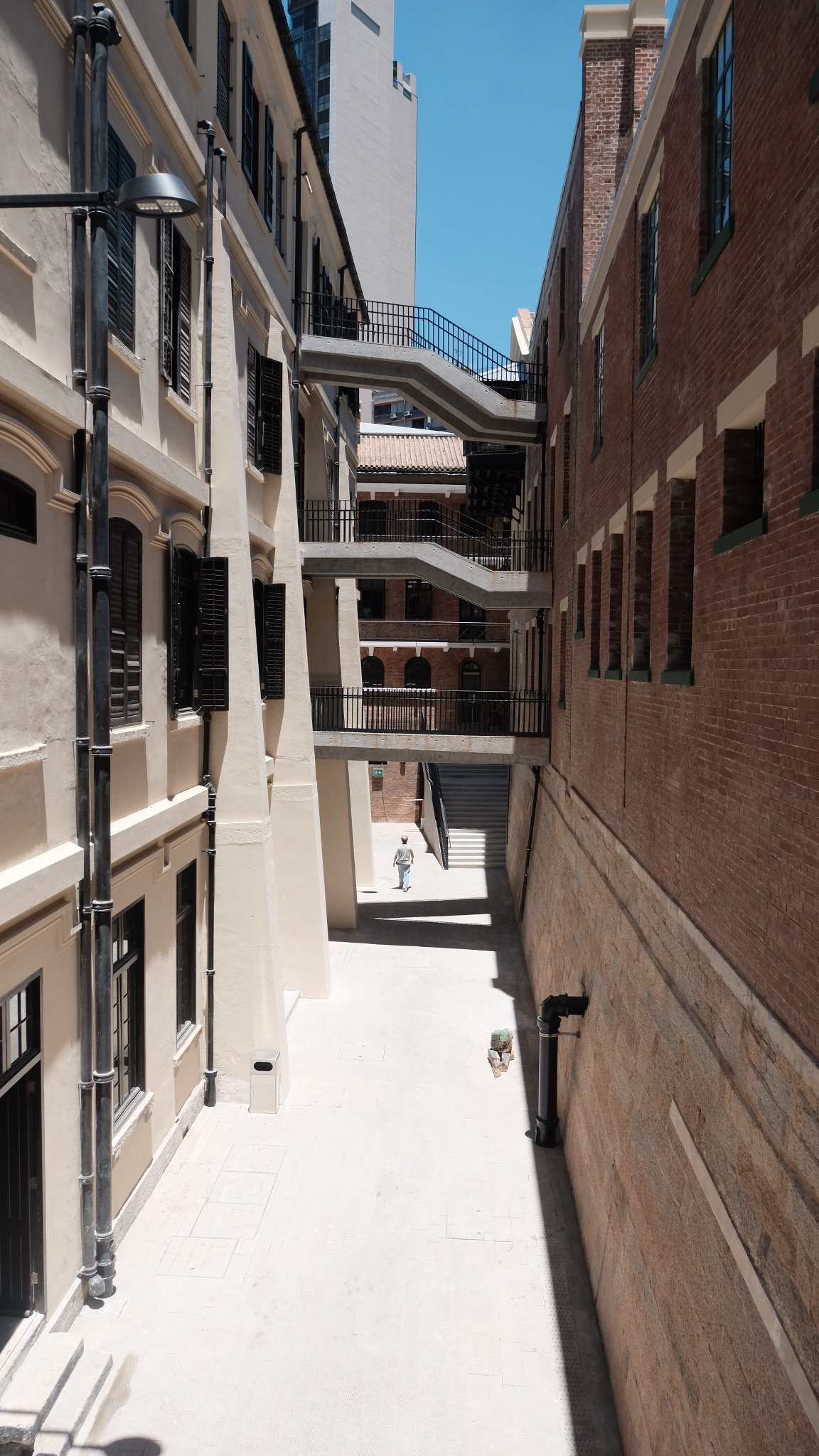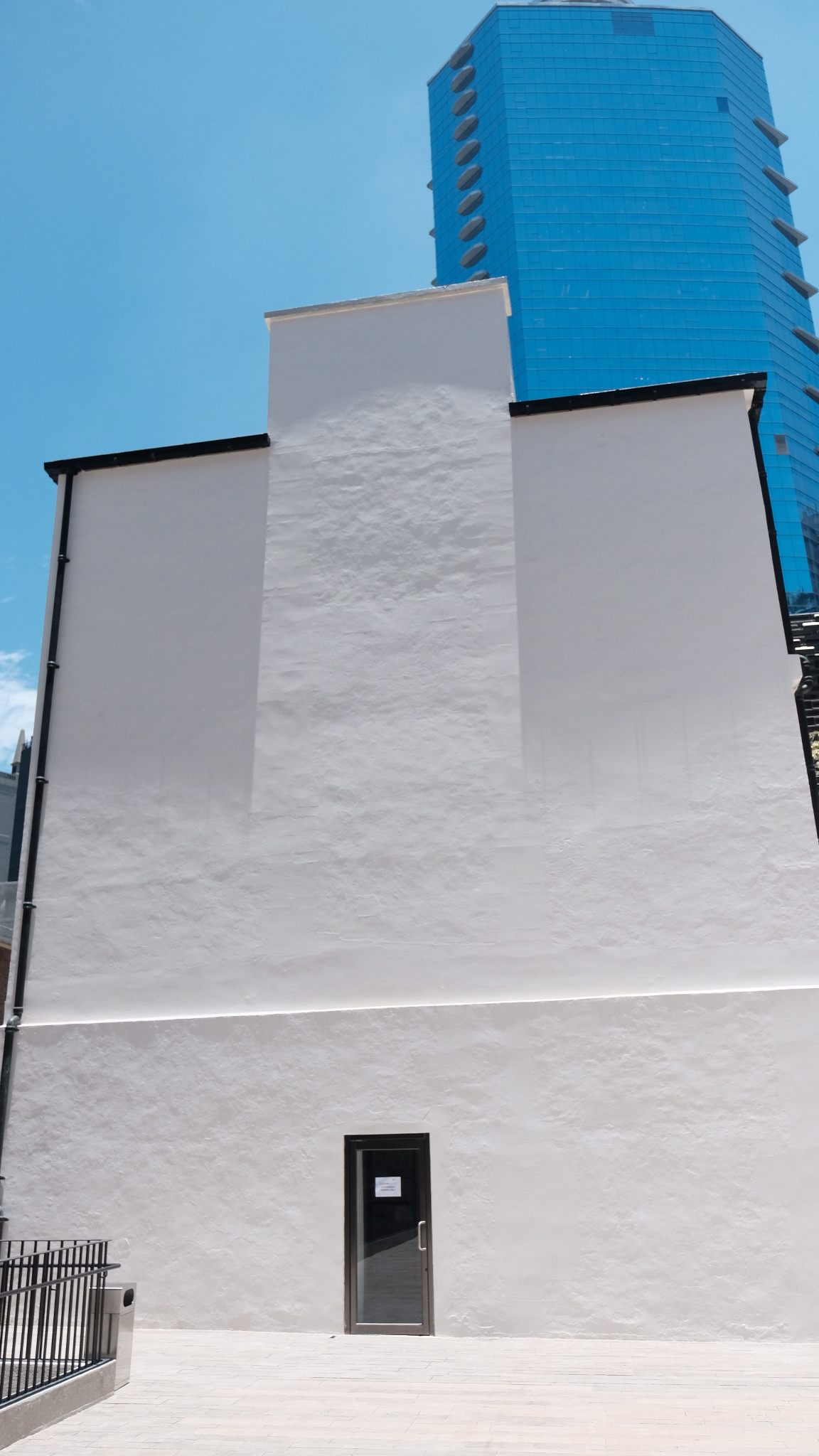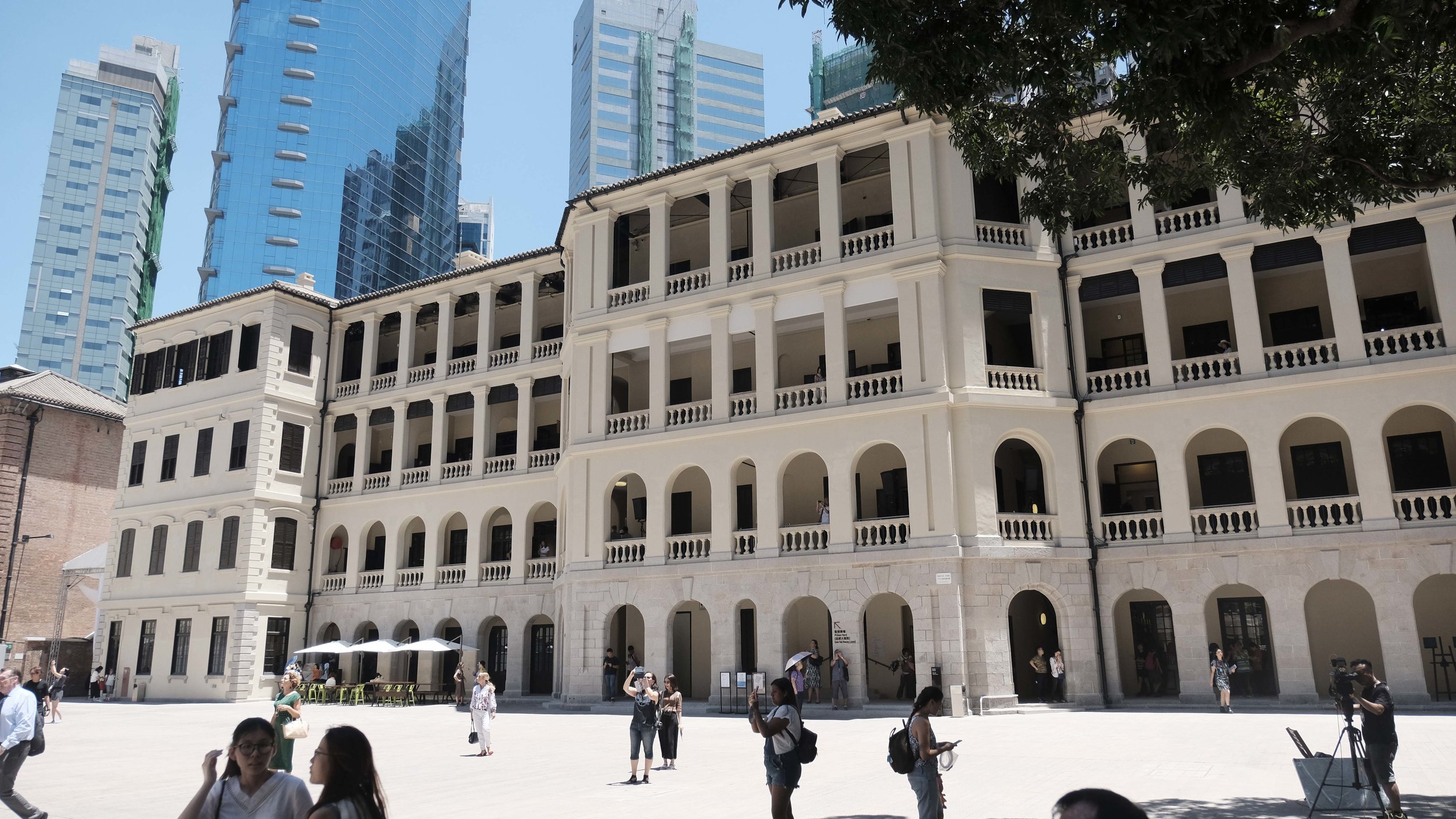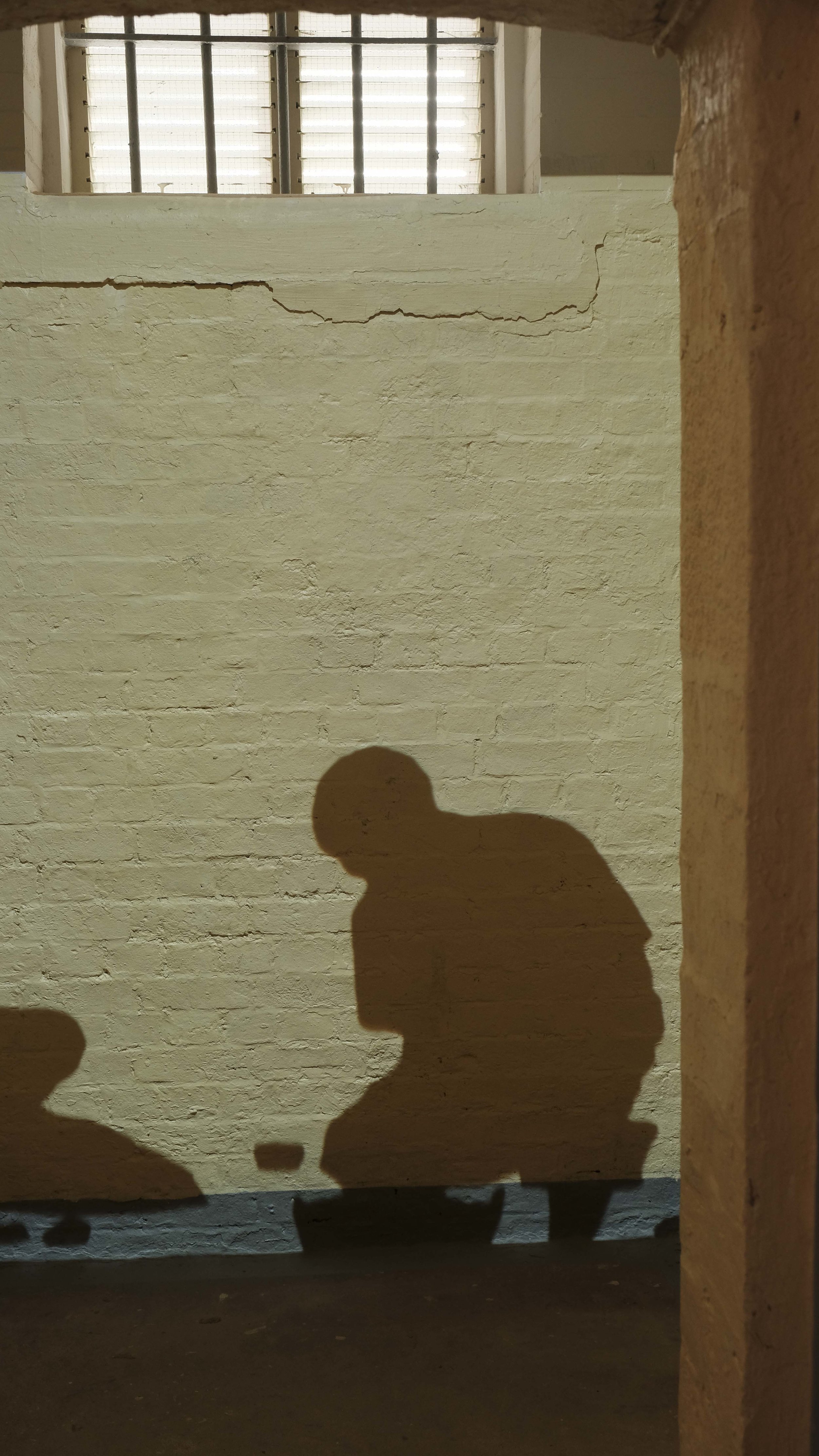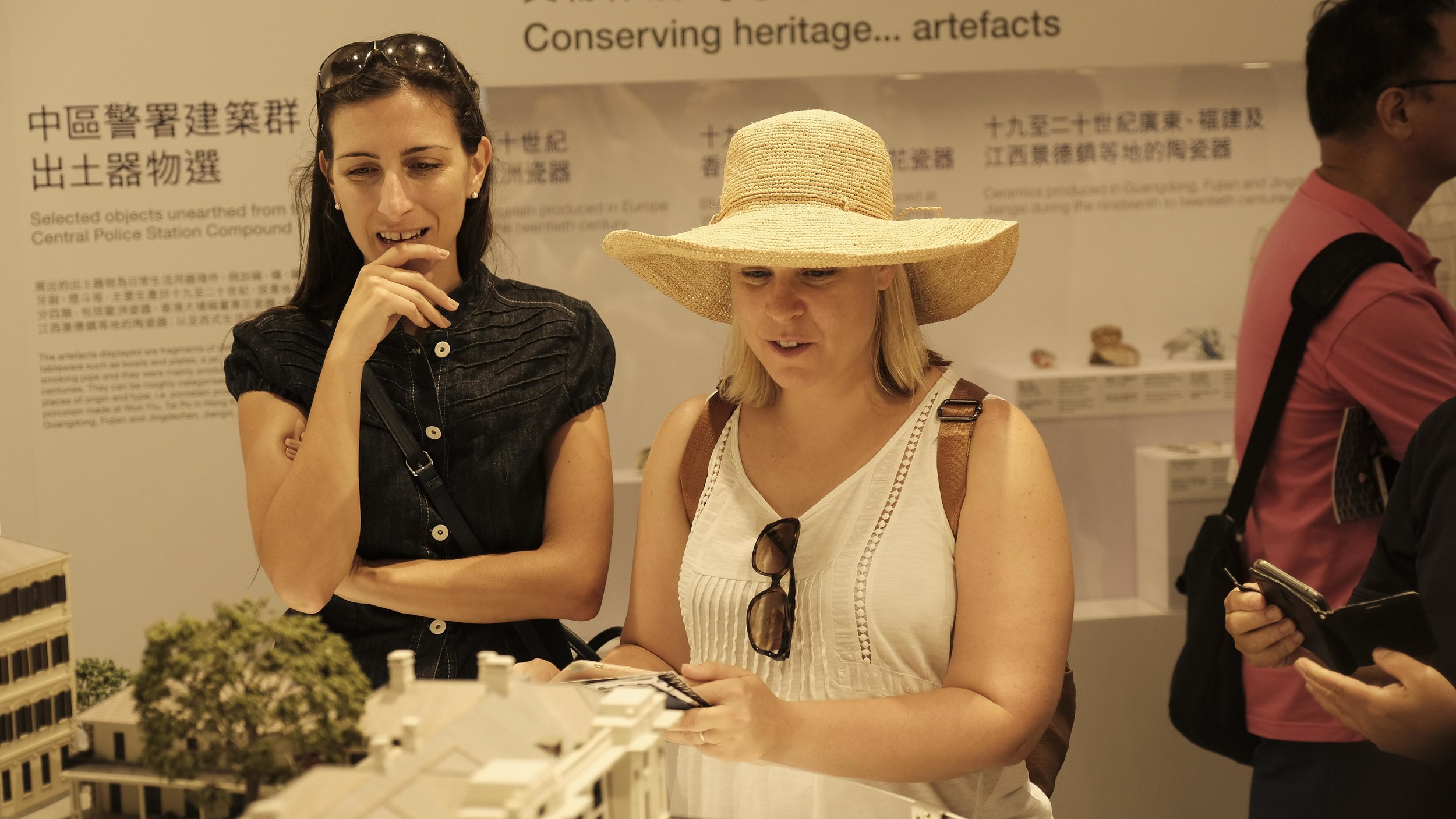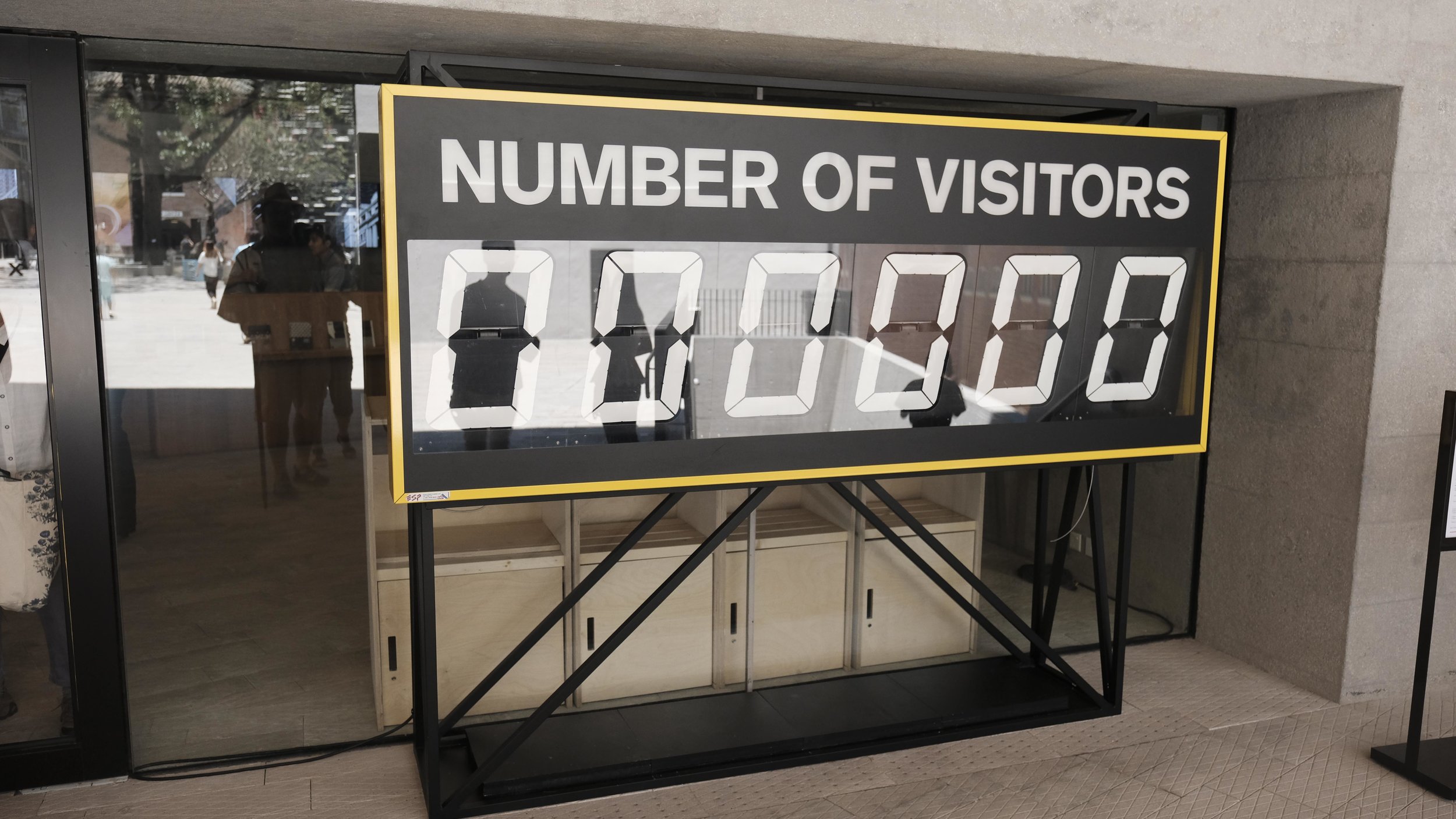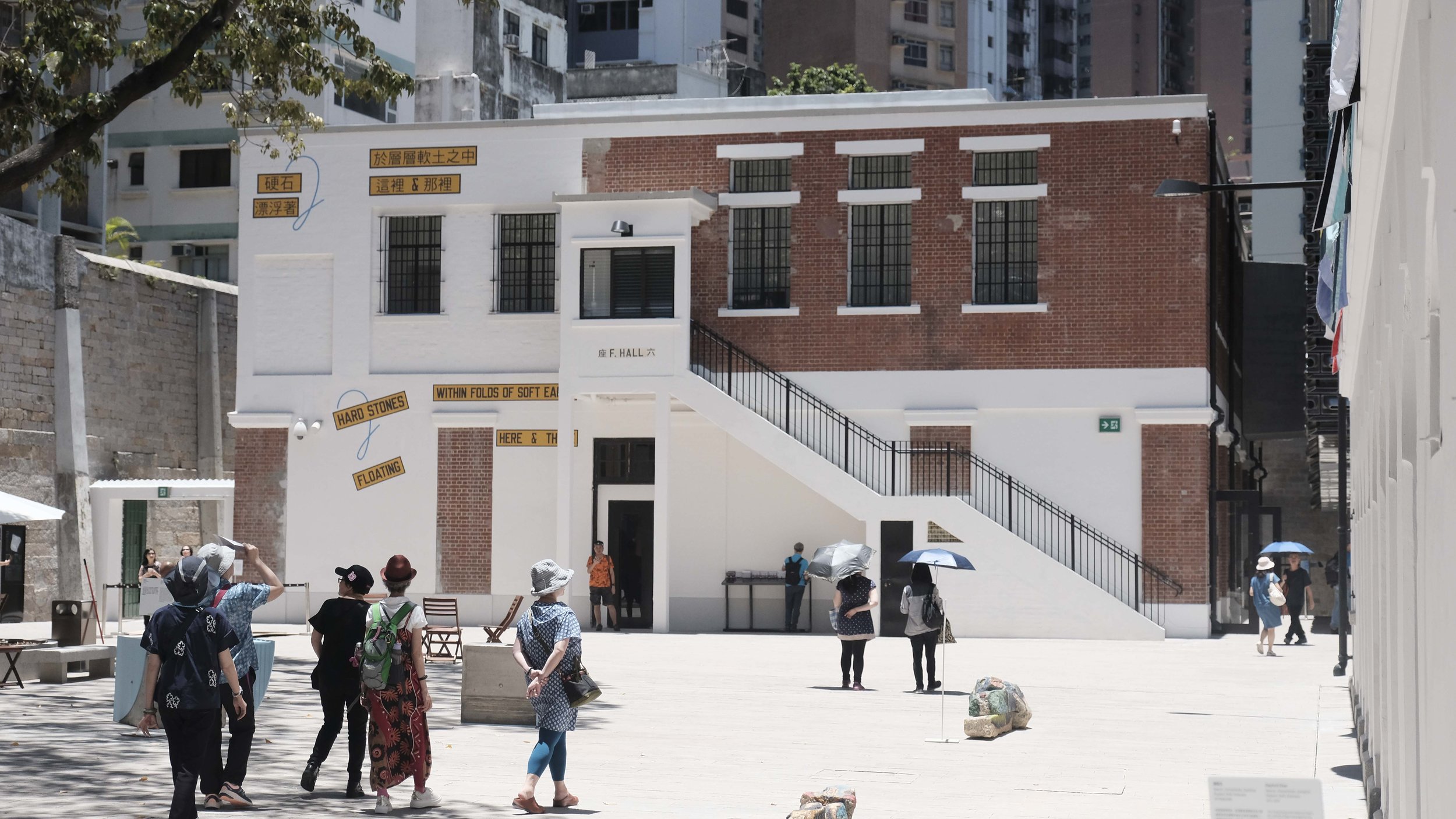Sham Shui Po, 2018
Earlier this week, one of my clients asked me what I meant by the phrase "raw Cantonese street culture". I coined this phrase shortly after I began offering tours in old Kowloon. Contrary to what some may think, it is not a marketing buzz word or overused cliche. I am pretty sure that I am the only one using that precise phraseology although others have described what I have in mind in their own way sometimes even using flowery adjectives such as "seedy magnificence," a term used in the Kowloon Walled City Exhibit in Kowloon Walled City Park.
I was initially exposed to Cantonese culture beginning as a kid. When my family lived in Brooklyn NYC, our walk up apartment was adjacent to a Chinese restaurant, which in NYC in those days meant Hong Kong Chinese. I remember the food aromas (BBQ duck, moo shoo pork, chow mein and egg rolls) wafting up through the open window during the summer and the loud and boisterous banter of the restaurant employees cleaning dishes and hanging out in the back alley. We ate there once or twice and my Mom was not satisfied with the cuisine. What did I know. That back alley was my earliest exposure to Cantonese culture.
We also lived a few subway stops from China Town in Manhattan and my parents would often take my brother and I Sundays for dinner or dim sum lunch in China Town. That was NYC China Town in the old days. I hear the dim sum restaurant is still there on the famous old "crooked street" even though many of the surrounding establishments now offer Thai or Vietnamese. It was a real old school joint serving delicious dim sum on a tea trolley stacked with dishes of different sizes and colours to denote the prices. I had no idea what "yum cha" meant at the time. Naturally, there would always be a stroll around the neighborhood.
China Town Manhattan, By chensiyuan (chensiyuan) [GFDL (http://www.gnu.org/copyleft/fdl.html) or CC BY-SA 4.0 (https://creativecommons.org/licenses/by-sa/4.0)], via Wikimedia Commons
I lived in a very ethnic neighbourhood in Brooklyn which meant there was plenty of urban street culture. But way back then, China Town was one big adventure for me. The aromas wafting into the apartment were magnified exponentially and the mixture of fresh and half rotting produce and fish parts in the surrounding market stalls was not for the squeamish on a sweltering Summer evening. Nevertheless, the food was awesome, the streets were one big strange and mysterious outdoor market and very very messy and chaotic indeed. And we always brought home a bag of steamed pork buns to keep in the freezer. Little did I know, this was my earliest exposure to Cantonese street culture.
Main Street, Flushing Queens NYC--Yanping Nora Soong at English Wikipedia [CC BY-SA 3.0 (https://creativecommons.org/licenses/by-sa/3.0)], via Wikimedia Commons
Later we moved to Northern Queens. Very close to Main Street, Flushing. I used to travel through Main Street on the way to school. Back then Main Street was more of a melting pot of mixed ethnicity. It still is a melting pot complete with with pizza, potato knishes and fishballs. But today it is also known as one of the biggest overseas Chinese communities in the world. As I grew up, I watched it gradually transform. We would often go there to do our Asian food shopping or stop for a meal on the way to Shea Stadium. A few years back, I took my lovely wife, who is Thai but speaks Cantonese like she was born in Hong Kong, to Main Street and we had a ball, I mean fish ball! We shopped in the markets and haggled in the shopping stalls. We had street food and stopped for wonton soup in a real local joint and we found fresh red hot chili peppers. Her comment: This is just like the streets of Hong Kong. My thought: This is Cantonese street culture.
When I lived in Japan during high school, I made several visits to Hong Kong in the early 1970s because my Dad had an office here. I distinctly remember two of my school pals, the Tam Brothers, who were real Hong Kong Chinese showing me around the seedy old streets of Hong Kong and Kowloon, including quite memorably, the so called poor man's night club, a working class venue of outdoor entertainment that I love to recount when I am on night tour. What an eye opener that was for me. Once again, Cantonese street culture.
So now I have been living in a purely Cantonese neighbourhood of old Kowloon for 15 years. My genre of street photography is what is also known as a "raw street", as in no holds barred. And, I can walk you through any part of Kowloon, Hong Kong Island or Macau pointing out myriad quintessential examples of "raw Cantonese street culture". But what exactly does one mean by raw Cantonese street culture? The following quote by Supreme Court Justice Potter is one approach:
"I shall not today attempt further to define the kinds of material I understand to be embraced within that shorthand description [of "hard-core pornography"], and perhaps I could never succeed in intelligibly doing so. But I know it when I see it, and the motion picture involved in this case is not that."
So, I could just say, I know it when I see it and here it is. But as a savvy cultural tour guide that certainly would not suffice. So here is a more polished explanation of what I mean when I say Cantonese street culture.
Kwun Yam Temple, Hung Hom
Understandably, one could assume it means a place where the local people speak Cantonese. And in Hong Kong that is indeed the case. However, it goes much deeper than that. At the most basic level, we are speaking of the culture of the Cantonese people. Who are the Cantonese people? The following is an excerpt on this subject from the great all knowing Wikipedia:
"Cantonese people (simplified Chinese: 广府人; traditional Chinese: 廣府人; Jyutping: gwong2 dung1 jan4; Hanyu: Guǎngdōng Rén; lit. people of Guangdong) are Han Chinese people originating from or residing in Guangdong Province, China, formerly romanised as Canton Province. The term "Cantonese people" is often synonymous with the Punti (本地; bun2 dei6) people. They are also referred to as "Kongfu" in Malaysia and "Konghu" in Indonesia and as "Hoa" in Vietnam.
The Cantonese people were historically responsible for establishing the Cantonese language's usage in Hong Kong during the early migration to the colonial era. Today, Hong Kong and Macau are the only regions in the world where Cantonese is the official spoken language; most people in Guangdong, as elsewhere in Mainland China, speak Mandarin in addition to Cantonese."
[Continuing]
"Until the 19th century, Cantonese history was largely the history of Guangdong.
What is now Guangdong was first brought under Qin influence by a Qin dynasty general named Zhao Tuo who later founded the kingdom of Nanyue in 204 BC.The Nanyue kingdom went on to become the strongest Baiyue state in China, with many neighboring kingdoms declaring their allegiance to Nanyue rule. Zhao Tuo took the Han territory of Hunan and defeated the Han dynasty's first attack on Nanyue, later annexing the kingdom of Minyue in the East and conquering Âu Lạc, Northern Vietnam, in the West in 179 BC.
The greatly expanded Nanyue kingdom included the territories of modern-day Guangdong, Guangxi, and Northern Vietnam, with the capital situated at modern-day Guangzhou. The native people of Guangdong remained under Baiyue control until the Han dynasty in 111 BC, following the Han–Nanyue War. However, it was not until subsequent dynasties such as the Jin Dynasty, Tang Dynasty and Song Dynasty that major waves of Han Chinese began to migrate into Guangdong. Waves of migration and subsequent intermarriage meant that existing populations of Guangdong were displaced, but some native groups like the Zhuang still remained. The Cantonese often call themselves "people of Tang". This is because of the Inter-mixture between native and Han immigrants in Guangdong reached a critical mass of acculturation during the Tang dynasty, creating an new local identity among the Guangdong people."
[Continuing]
"The Lingnan culture or Cantonese culture, refers to the regional Chinese culture of the Southern Chinese/Lingnan twin provinces of Guangdong and Guangxi. Strictly speaking, the term "Lingnan culture" has two definitions:
In a purely geographical sense, the term includes not only Cantonese culture, but also the cultures of minority groups (such as the Hakkas and Teochews, as well as the non-Han Zhuangs) within the Lingnan region.
More typically, it is only used in referring to Cantonese culture, the historically dominant cultural-linguistic force in Guangdong and Guangxi...
With the migration of the Cantonese people to the neighboring Hong Kong and Macau, as well as in many overseas communities, Lingnan/Cantonese culture has become an influential cultural force in the international community, and forms the basis of the cultures of Hong Kong and Macau.
The sinicization of the Lingnan region was largely complete by the time of late Southern Song Dynasty (12th to 13th century). During 15th to 18th century, Lingnan (especially the area around Guangzhou) served as one of the main ports for the Ming Empire. Cantonese people were exposed to Western European cultures and incorporated European elements into their own cultural artifacts. It was by that time when Lingnan culture has largely attained its current form."
[Wikipedia, Cantonese People]
[Wikipedia, Lingnan Culture]
Bingo! Cantonese/Lingnan culture is the basis of the cultures of Hong Kong and Macau. Taking it one step further, we know, for many reasons, the substantial part of the Chinese overseas diaspora was also Cantonese. That may well change in the future. But for now it certainly does remain true. It is interesting to note once again from Wikipedia:
With Guangzhou being major a port(sic) for both the Qing Dynasty and the People's Republic of China, Cantonese people have often dominated Han Chinese immigration to the Western world, resulting in Cantonese historically being the lingua franca in most Western Chinatowns. They also helped establish the Chinese term for Chinatown: "Tongyan gaai" (唐人街; Tong4 jan4 gaai1), pronounced as "Tang ren jie" in Mandarin. This term literally means "Street of the Tang people". This is said to reflect the fact that the sinicization of Lingnan was most prominent during the Tang Dynasty, which resulted in the Cantonese people having an especially strong affinity to that dynasty.
[Wikipedia, see above]
Urban Earth God Shrine, Macau 2018
Double bingo! Little did I know as a youngster visiting China Town NYC, that I was actually visiting the Street of the Tang People! It is also interesting to note that the area surrounding Sheung Wan on Hong Kong Island, was in the very early days referred to as China Town. It sounds like a joke until you consider that that was the place where the original migrant Chinese population, preceding the acquisition of Kowloon, was required to reside. Man Mo temple is a cultural icon in Hong Kong and it sits squarely in the centre of that neighbourhood.
So now we understand the general theory. What does it mean on the Streets of Hong Kong and Macau? It is impossible to say that the streets of Hong Kong and Macau are pure unadulterated Cantonese/ Lingnan because what makes these two cities unique is the interaction of that culture with foreign influences (East literally did meet West for the first time in Canton, Macau and Hong). However, in neighborhoods like old To Kwa Wan, Yau ma Tei, Mong Kok, Sham Shui Po, Kowloon City, Kwun Tong and many others in Kowloon, it is possible to glimpse and experience a decidedly more authentic or less gentrified version. It is rough, it is gritty and seedy magnificence is a fine way of characterising much of it. One's initial reaction would be to say, wow this is authentic and truly local and it truly is. I like to say this is street jazz. It is surprisingly creative, colourful, very spontaneous and raw.
Canton Road Wet Market 2018
What are the cultural markers that exemplify Cantonese culture on the street? Well there are too many for me to list here. But you see it in the style of the hawker markets, the shops, the business clustering, the street food, outdoor restaurants and tea rooms, the bamboo scaffolding, the neon signage, the street tradesmen, the music, the old tong laundry style buildings, the awnings, the mahjong parlors, the massage parlors, the pawn shops, the scarce remnants of squatter villages and roof squatters, the informal street shrines and folk temples, the bamboo laundry poles, the bird men, the exterior surfaces of the old buildings. The list is endless.
It has been said that Cantonese culture is essentially a culture of the street. There is more to it than that. But all of the things you see on the streets, contribute to a uniquely local style of what has been referred to by urban planners as "messy urbanism", the use of public spaces and surfaces in ways not originally contemplated by city planners. Messy urbanism can be found in every great city. Those who have traveled the region know there are wonderful examples of messy urbanism all around South East Asia and it is similar but very different in every country one visits. There is even a fascinating book on the subject: Messy Urbanism--Understanding the "Other" Cities of Asia, Edited by Manish Chalana and Jeffrey Hou (2016). It is cultural by nature and and observing its curious manifestations with a camera is something I find to be immensely enjoyable. The zen of the Cantonese street is what I am after.
Messy Urbanism in Macau, 2018
The local writer and journalist Christopher DeWolf published another interesting little tract: Borrowed Spaces--Life between the Cracks of Modern Hong Kong 2017. I enjoyed reading this book because it mirrored a great deal of what I had been seeking in my street photography, thinking about since the occupy protests and more recently mentioning on my tours, particularly about Hong Kong messy street culture and its nexus with local cultural identity. DeWolf says the following in the opening of his book:
"In many cities, the best places are the ones that have been planned the least: the informal spaces, borrowed and altered from their official uses. What makes Hong Kong special is how many of these borrowed spaces exist within the rigid framework of concrete housing estates and skyscrapers that are decidedly not human scaled. I began to realise that if you stripped away all its accoutrements... Hong Kong would be little more than a barren landscape of ugly concrete buildings...The charm of Hong Kong is the way the people have transformed this often hostile and inhuman city into something vibrant and liveable...Hong Kong is in an existential crisis...[T]he city's urban fabric is being radically reshaped, with hawkers cleared off the streets and entire blocks of small buildings being bulldozed to make way for new shopping malls and towers."
A recent editorial in the South China Morning Post begins with the headline:
It's not for everyone, but Mong Kok is the real, raw and raunchy side of Hong Kong culture we should be fighting to preserve--Noisy, congested, polluted, vibrant, creative and colourful, our city is all these things and the government must protect our heritage, not turn us into another cookie-cutter metropolis with chain stores and bland malls.
Just yesterday, I was in Mongkok photographing the sad demise of one of my favorite old buildings on Canton Road. I understand this will be a temporary renovation quickly followed by demolition. Go figure.
Canton Road, June 2018.
There, now getting back to the best way to describe "raw Cantonese street culture". For me it is with a camera. And that is essentially what I am constantly doing when I post my Hong Kong street photography. You can find much of it here. Eventually, there will be a book. In the meantime, raw Cantonese street culture is precisely what you are going to see when you join me on the Streets of Hong Kong!
Oh, and one more thing about my photography tours. It is my firm belief that the best way to enhance one's street photography is to familiarise one's self with the back ground of the subject matter you are photographing. Context to go with your your images. That is why I am writing this post. I hope this post will provide the reader who is out and about photographing the streets of Hong Kong with some useful food for thought, call it street food!
Yau Ma Tei, 2004
Further Reading:
The Urban Design of Impermanence--Streets, Places and Spaces in Hong Kong, Peter Cookson Smith (2006).
The Making of Hong Kong--From Vertical to Volumetric, Barrie Shelton, Justyna Karakiewicz and Thomas Kvan (2011).
Portraits From Above--Hong Kong's Informal Rooftop Communities (2013).
Street Studies in Hong Kong, Frank Leeming (1977). This book is out of print, but it is an exhaustive study of a number of different neighborhoods in Hong Kong, literally drilling down into the history, street culture and socio-economic background.
To view more of my images of Hong Kong and Macau, please visit my Flickr Stream or visit me on Instagram: @williambanzai7.
Hope to see you soon on the Streets of Hong Kong or Macau!
WB7
End of Dispatch
ABOUT STREETS OF HONG KONG PREMIUM WALKING TOURS
I am an American of Asian descent from NYC who has spent many years living and working throughout Asia, most recently based from a very old Chinese neighborhood called To Kwa Wan in Old Kowloon for 15 years. I am also a retired international lawyer with strong Asian roots and I have reinvented myself as a professional artist, photographer and street savvy Hong Kong premium tour guide.
I specialize in premium private walking tours with an emphasis on street culture, local history and, for those so inclined, all levels of photography. My private tours are personalized to match your unique interests. Inasmuch as I am a professional photographer, all of the points of interest covered in my repertoire have a very strong visual appeal coupled with a well informed narrative adding dimension and context to your images.
Whether you are into simple travel snapshots, social media image sharing or serious landscape, architectural or urban street photography or just enjoying the Hong Kong experience, I am in a position to maximize your time spent in Hong Kong and its surrounding locales to the fullest.
Hence, my mission can be encapsulated as follows: To provide all of my clients with an entertaining, deeply informative and street savvy premium travel experience ultimately leading to cherished memories, a portfolio of stunning on-tour photographs, an urge for further investigation and a strong desire to navigate your way back to this wonderfully engaging city.
My premium walking tours are ideal for acclimating and orienting first time visitors to Hong Kong as well as for returning visitors eager for a new experience.
I accept engagements up to one year in advance or, subject to my availability, last minute and/or same day. Families with children are always welcome and children 16 years and under are free of charge. Special needs clients are also welcome.
You can book a tour or send me an inquiry now by going to my Contact/Booking Page.



![China Town Manhattan, By chensiyuan (chensiyuan) [GFDL (http://www.gnu.org/copyleft/fdl.html) or CC BY-SA 4.0 (https://creativecommons.org/licenses/by-sa/4.0)], via Wikimedia Commons](https://images.squarespace-cdn.com/content/v1/59a018fa59cc68b53a4557fd/1530346869264-CKCTCISSXWXYGSTRQTZU/800px-Chinatown_manhattan_2009.JPG)
![Main Street, Flushing Queens NYC--Yanping Nora Soong at English Wikipedia [CC BY-SA 3.0 (https://creativecommons.org/licenses/by-sa/3.0)], via Wikimedia Commons](https://images.squarespace-cdn.com/content/v1/59a018fa59cc68b53a4557fd/1530347207379-HUJ7OEKH2NIFYC63YVXF/1280px-Flushing_Main_St%2C_Kissena_Blvd%2C_and_41_Av_crowded_intersection.jpg)









